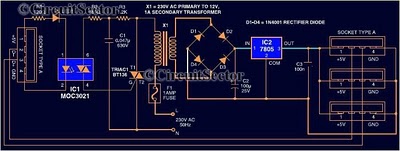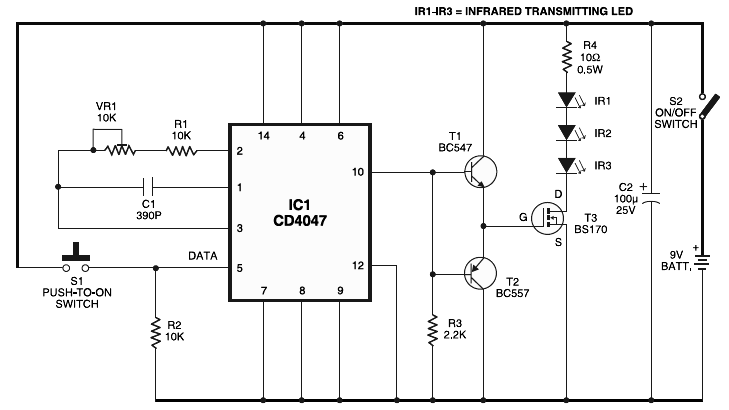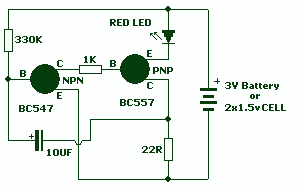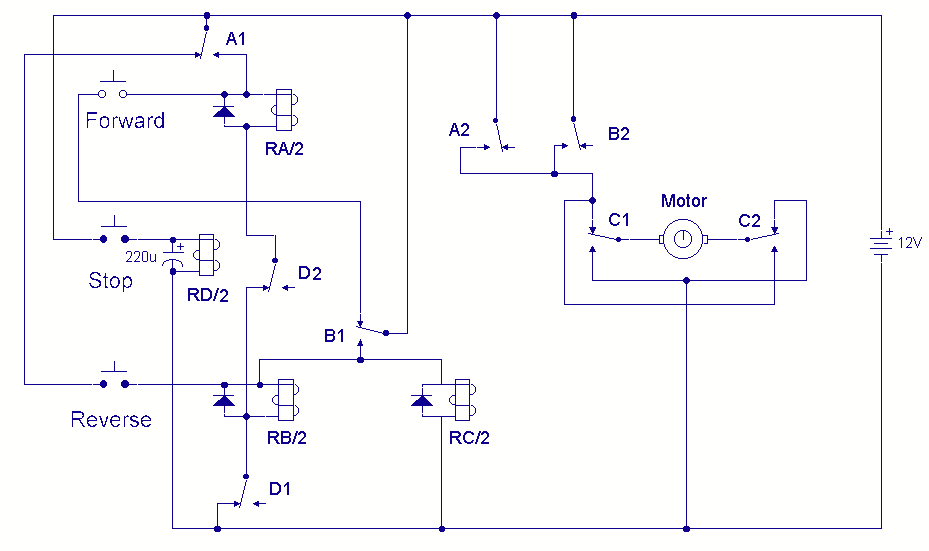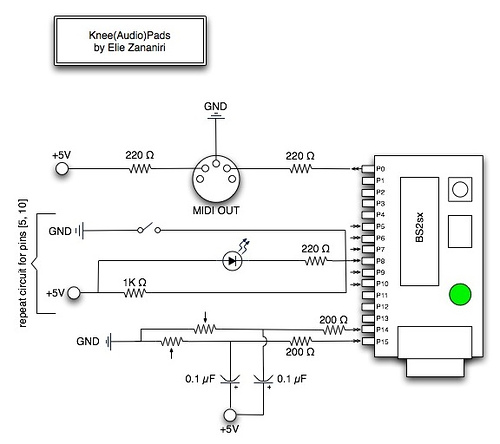
Simple Two Way Communication Intercom Circuit Schematic diagram
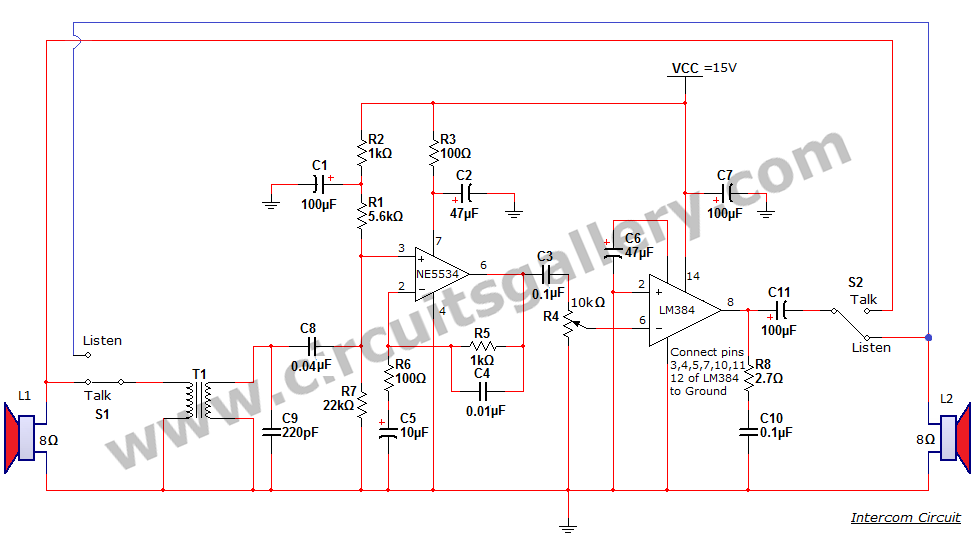
An intercom or intercommunication circuit is a two-way communication system that provides a reliable communication line and is easy to implement. The circuit consists of an amplifier, two switches, and two loudspeakers, allowing for the extension of the system by adding more speakers with the help of additional switches. The IC LM384 functions as a power output amplifier in this intercom circuit, delivering approximately 2 watts of audio power with a 15-volt supply voltage. This intercom circuit diagram is simple and practical, suitable for home and office intercom applications. When switch S1 is in the "Talk" position, L1 operates as a microphone, while in the "Listen" position, L1 acts as a speaker. The same functionality applies to L2. The IC NE5534 serves as a preamplifier, enhancing the audio signal before it is fed into the LM384 amplifier section. The gain of the LM384 operational amplifier is set to 11. By adjusting the switch positions of S2 to "Talk" and S1 to "Listen," L2 connects to the input section while L1 connects to the output section.
The intercom circuit operates on a dual-channel basis, allowing users to communicate in both directions. The core components include the LM384 and NE5534 integrated circuits, which are critical for audio processing. The LM384, known for its ability to deliver significant audio power, is ideal for driving loudspeakers in intercom applications. Its output power capability, combined with a 15-volt power supply, ensures that the audio signal remains strong and clear.
The NE5534 preamplifier plays a vital role by boosting the audio signal before it reaches the LM384. This preamplification is crucial for maintaining audio fidelity, especially in environments with background noise. The gain setting of 11 for the LM384 ensures that the output signal is sufficiently amplified for clear communication.
The use of switches S1 and S2 allows for seamless toggling between talking and listening modes. This design enables each loudspeaker to function as both a microphone and a speaker, depending on the switch configuration. The ability to add more speakers enhances the system's versatility, making it suitable for various applications, from small residential setups to larger office environments.
Overall, the intercom circuit is a straightforward yet effective solution for two-way communication, leveraging the capabilities of the LM384 and NE5534 to deliver reliable audio performance. The design simplicity and scalability make it an attractive option for users seeking an efficient intercom system.Intercom or Inter communication circuit is a two directional communication system. It provides a reliable communication line and is extremely easy to implement. The circuit is prepared by an amplifier, two switches and two loudspeakers. We can extend this circuit by adding more number of speakers with the help of switches. IC LM384 works as a powe r output amplifier in this intercom circuit. LM384 provides almost 2 watts of audio power via 15 volts supply voltage. This intercom circuit diagram is very simple and practical circuit capable of using intercoms for homes, office intercom. If switch S1 is in Talk` contact, L1 functions as a Microphone. If it is in Listen` position, L1 functions as a Speaker. (Similar case applicable in L2 also. ) IC NE5534 works as a Pre Amplifier which boosts the Audio signal before applying to the LM384 amplifier section.
The gain of the LM384 op amp amplifier is set to 11. By changing the switch positions of S2 in to Talk` position and S1 to Listen` position, L2 get connected to the input section and L1 connected to output section. 🔗 External reference
The intercom circuit operates on a dual-channel basis, allowing users to communicate in both directions. The core components include the LM384 and NE5534 integrated circuits, which are critical for audio processing. The LM384, known for its ability to deliver significant audio power, is ideal for driving loudspeakers in intercom applications. Its output power capability, combined with a 15-volt power supply, ensures that the audio signal remains strong and clear.
The NE5534 preamplifier plays a vital role by boosting the audio signal before it reaches the LM384. This preamplification is crucial for maintaining audio fidelity, especially in environments with background noise. The gain setting of 11 for the LM384 ensures that the output signal is sufficiently amplified for clear communication.
The use of switches S1 and S2 allows for seamless toggling between talking and listening modes. This design enables each loudspeaker to function as both a microphone and a speaker, depending on the switch configuration. The ability to add more speakers enhances the system's versatility, making it suitable for various applications, from small residential setups to larger office environments.
Overall, the intercom circuit is a straightforward yet effective solution for two-way communication, leveraging the capabilities of the LM384 and NE5534 to deliver reliable audio performance. The design simplicity and scalability make it an attractive option for users seeking an efficient intercom system.Intercom or Inter communication circuit is a two directional communication system. It provides a reliable communication line and is extremely easy to implement. The circuit is prepared by an amplifier, two switches and two loudspeakers. We can extend this circuit by adding more number of speakers with the help of switches. IC LM384 works as a powe r output amplifier in this intercom circuit. LM384 provides almost 2 watts of audio power via 15 volts supply voltage. This intercom circuit diagram is very simple and practical circuit capable of using intercoms for homes, office intercom. If switch S1 is in Talk` contact, L1 functions as a Microphone. If it is in Listen` position, L1 functions as a Speaker. (Similar case applicable in L2 also. ) IC NE5534 works as a Pre Amplifier which boosts the Audio signal before applying to the LM384 amplifier section.
The gain of the LM384 op amp amplifier is set to 11. By changing the switch positions of S2 in to Talk` position and S1 to Listen` position, L2 get connected to the input section and L1 connected to output section. 🔗 External reference
